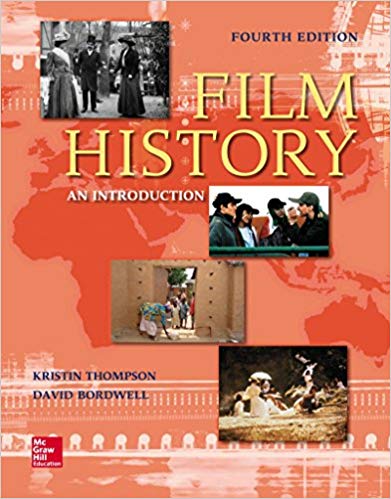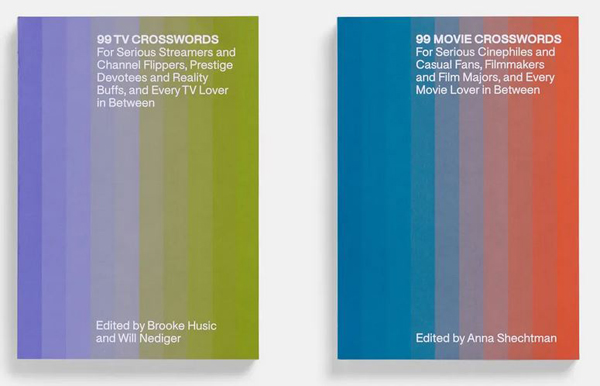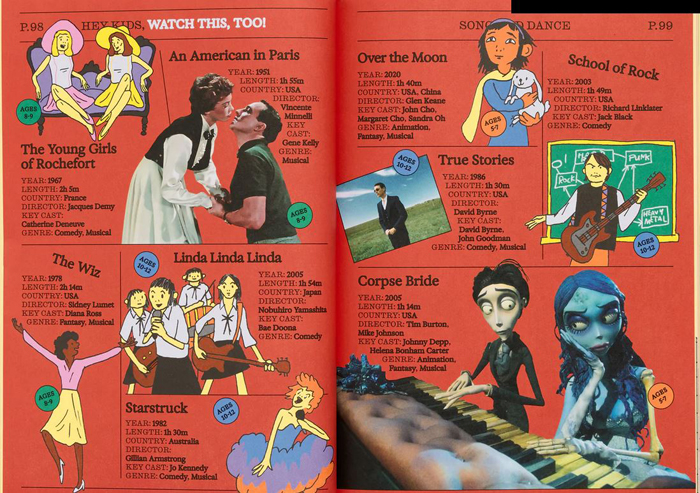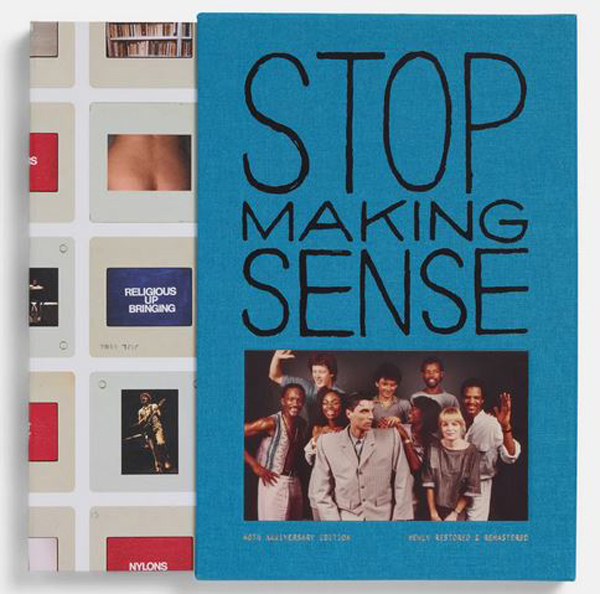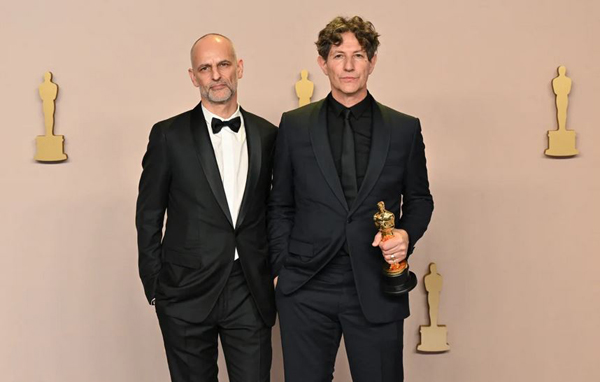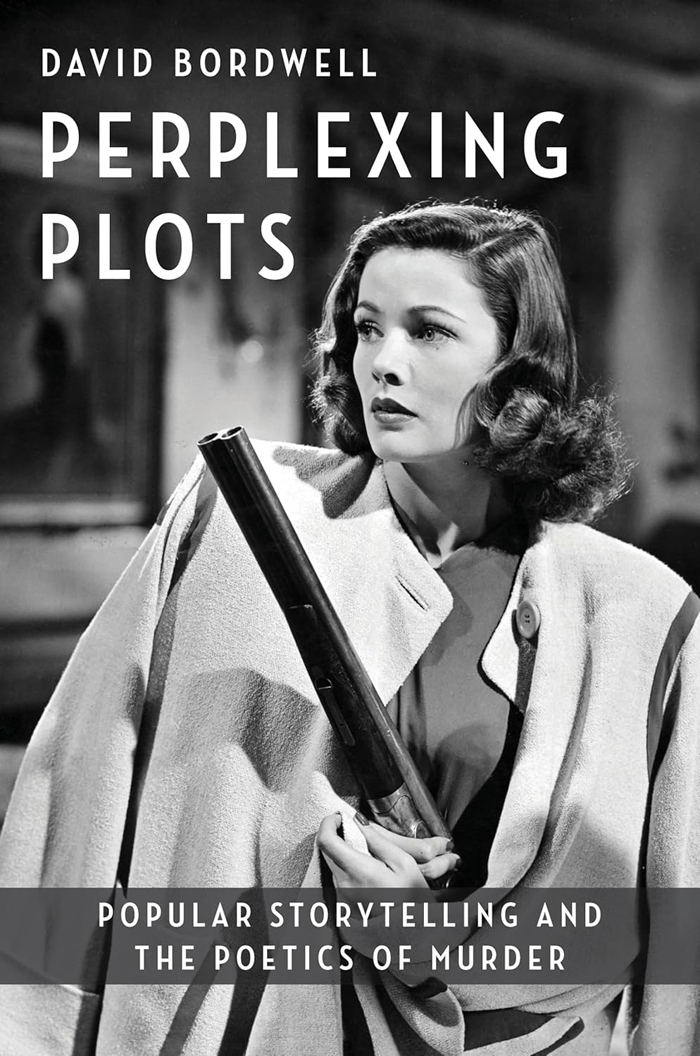
A crowd lined up for a screening at the 2024 Wisconsin Film Festival (Source: Wisconsin Film Festival Facebook)
KT here:
About a month ago, August 17 to be precise, Variety published an essay by Owen Gleiberman. In it he decries the fact that while national grosses of mainstream films, especially blockbusters, have been recovering from the problems caused the pandemic and the writers’ strike, art-house films have not seen a comparable recovery. The blame for this disparity he places squarely on the shoulders of people who love art-house fare. They are either too timid to venture back a crowded theater or so lazy that they prefer to lounge about streaming movies. He even calls these art-cinema devotees “the bad guys” for having damaged the art-house market so badly. He considers no other possible causes of the art-house-cinema grosses failing to recover something like their former levels.
This struck me as unacceptable as a sole cause for the decline. I was tempted to write a response myself, but I didn’t have the data that would be needed to refute his claim. Fortunately the cinema-studies area of the Department of Communication Arts at the University of Wisconsin-Madison has a history of professors and graduate students studying the film industry. I have turned to two recent Ph.D. recipients whose areas of expertise are ideal for a guest post analyzing Gleiberman’s argument. They have delved into the working of the two main places where people see foreign films, indies, and restored classics in a theatrical setting: film festivals and art houses.
Matt St. John’s dissertation is entitled, “United Slates: The Evolution of the American Film Festival System.” He defended on July 20, 2023. In it, he examines the industrial functions of American film festivals and their historical development into an extensive system. Matt is currently a manuscript archivist at the Wisconsin Center for Film and Theater Research.
Zachary Zahos‘ dissertation is entitled, “Meaning in the Margins: Boutique Distribution and the Contemporary Art House Film Market.” He defended on July 10, 2024. In it, he historicizes the emergence and analyzes the releasing strategies of boutique distribution companies like Milestone Films, Kino Lorber, and The Criterion Collection, from 1980 to the present.
These two experts have information that is current. I am grateful to them for sharing that information, which shows that the decline in art-house grosses has many important causes and that the attendance by lovers of non-mainstream films has not dropped nearly as much as Gleiberman claims. They also exonerate those supposedly timid, lazy “bad guys.”
(Note: some of the sites linked below are behind paywalls.)
“Where the movie lovers are”
Have movie lovers stopped seeing movies? Owen Gleiberman thinks so, pressing the case that the sky is falling, or at least the ceilings of art-house theaters, in a Variety column last month (linked above).
Under the headline, “Will the People Who Say They Love Cinema the Most Come Back to the Movies?” Gleiberman reflects on the gap he perceives between the state of independent moviegoing today versus that of the halcyon 1990s. After listing the box office hits of the summer (primarily released by Disney), he steps back to note that “there is still a major piece missing”:
But what about the good guys of the ’90s — the adventurous moviegoers whose enthusiasm sparked the rise of indie film? Have they all gone away? No, but sorry, they’ve become the bad guys. Because they’re the ones who are staying home.
Gleiberman rounds up the usual suspects like streaming, lingering effects of the pandemic, and the deluge of home media options, before stating that droves of people are still clearly seeing films, leading to his main question: “Why aren’t more of the people who say they love cinema among them?”
Longtime readers of this blog will recall popular discourses of yore proclaiming “the Death of Film,” given how frequently David (here) and Kristin (here and here) have deflated such doom-and-gloom arguments over the years. For our part, we do not wish to put too fine a shine on the industry outlook today. From the popular press alone, recent features in Harper’s, The New York Times, and The New Yorker supply plenty of evidence on how deregulation, COVID-19, and intellectual property have respectively hindered “the movies,” as we know or knew them.
But in Gleiberman’s case, his column provides no evidence for its central claim: that audiences are to blame for the decline of independent and non-blockbuster films like dramas. Of these supposedly marginal films, he writes:
You might say: Those movies do the business they do. There’s no world where they would have been bigger. But I’m saying that we need nothing less than a collective rediscovery of what commercial filmmaking can mean. Yes, it means twisters and bad boys; it means Marvel and horror; it means rom-coms and animated rides. But can’t we envision a world, once again, where it could also mean…drama? (Just look at the business that “It Ends with Us” is doing.) Where the big screen can take two people talking in a room and make them larger than life?
Leaving aside the merits of casting It Ends With Us as the poster child for the kind of cinema that needs to be saved, we take issue with the overall vagueness of Gleiberman’s prognosis. How does “a collective rediscovery of what commercial filmmaking can mean” take place, and where? It likely involves the independent distributors and exhibitors who acquire and screen the non-blockbuster fare Gleiberman champions, yet the column makes no mention of these entities, or the specific strategies they have attempted as of late to retain and even expand their audiences. Rather, the blame rests squarely on the consumer:
This summer proved, beyond a doubt, that movies are still a hot commodity. The real question — not just for now, but for 20 years from now — is: What, exactly, is a movie going to be? It’s time that the people who say they love movies the most answered that by showing up for them again.
The last line especially rankles, because, for all the challenges “adult dramas,” indie cinema, and art house theaters face, uninterested audience members rank low on the list. Streaming’s plentitude certainly keeps many viewers at home, and box office failure is not confined to the independent film sector alone (see here, here, and here). As researchers focused on the contemporary art house distribution and film festival landscapes, we have observed a range of data points indicating enthusism among art house audiences, in particular the desire for more: more theaters, more volume, more unexpected and diverse programming options (see here, here, here, and here) .
Are audiences to blame for the struggles of independent and non-blockbuster films? The more salient issue, we would argue, comes in the transformation of distribution and exhibition infrastructure over recent years — changes which are especially visible in the markets outside of New York and Los Angeles. We’re not suggesting that it’s all blue skies and sunshine for art houses in the largest cities in the country, but film-loving audiences in smaller cities across the United States are meeting a more complex and varied set of situations and places in which they can view new independent films. When you actually follow the release trajectories of specialty fare today—as films bounce between multiplexes, art house theaters, and regional film festivals, propelled by increasingly short platform launches—“the people who say they love movies” start to look not so much checked-out, as scattered and spread thin.
Art-house theaters: Everything

Reading the trades here in Wisconsin—where we still receive our bundles of Daily Variety via horse-drawn carriage, as you no doubt picture—we tend to notice that industry press coverage can lose sight of the regional nuances of distribution and exhibition. (Anthony D’Alessandro’s box office reports for Deadline remain a notable exception for digging into regional market data, week after week.) These distinctions may seem small, but they are important when, for one, you want to gauge what makes a genuine domestic hit, on the specialty circuit or otherwise. Understanding how art-house theaters program and how specialty films travel, outside of New York and Los Angeles, is even more relevant when you set out to diagnose the behavior of cinephiles and “adventurous moviegoers” today.
To put it plainly, art house theaters across the country program more heterogeneous slates than ever before. New York may have the population and infrastructure to sustain a handful of theaters solely dedicated to first-run indie/international cinema and repertory film, art houses like Film Forum, Film at Lincoln Center, IFC Center, Metrograph, the Angelika Film Center, and Anthology
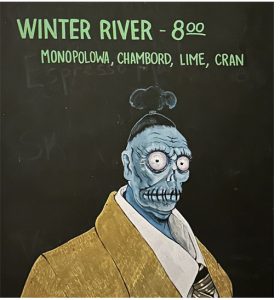
Art by Brie Underhill. Source: Texas Theatre Instagram
Film Archives. But independent theaters elsewhere, in addition to programming the latest indie or hot revival, often dedicate a share of their screens to first-run Hollywood titles—movies like, most recently, Beetlejuice Beetlejuice. While this brings in much-needed ticket sales for the venues, it means that screens traditionally reserved for specialty films are now, at times, showing new major releases.
Here is just a sample of the U.S. art houses now playing Beetlejuice Beetlejuice: the Athena Cinema, in Athens, Ohio; the Texas Theatre, in Dallas; FilmScene in Iowa City; and Sidewalk Film Center and Cinema, in Birmingham, Alabama. Even Manhattan’s storied Quad Cinema has joined in on the fun. All the while, these theaters are still screening independent films. The Athena is currently splitting its second screen between two A24-distributed titles, the drama Sing Sing and horror film The Front Room, as well as a nature documentary. FilmScene is also showing those two A24 films, plus the French thriller Red Rooms and grindhouse restoration Six-String Samurai. Down in Alabama, Sidewalk Cinema’s slate this week offers a snapshot of how pluralistic art house programming can be. In addition to Beetlejuice Beetlejuice, this two-screen theater booked the independent drama Good One, distributed by Metrograph Pictures; the documentary Family Tree, as part of the Southern Circuit Tour of Independent Filmmakers initiative; and revival screenings of Mary Poppins, via Disney, and Seven Samurai, via Janus Films.
None of these theaters are booking the $100 million Warner Bros. tentpole at gunpoint, as far as we can tell. In fact, the promotional gas these art houses have expended on Beetlejuice Beetlejuice is telling. The Texas Theatre, FilmScene, and the Athena all currently spotlight the film on their Facebook page cover photos, with the Athena having posted its image back in early August.
Nor are these art houses clearing half their slate for just any studio product. The embrace of Tim Burton’s Beetlejuice Beetlejuice, among independent theaters, falls in line with the post-pandemic exhibition strategies outlined in this 2022 Business Insider piece. Films by auteur directors, working in franchises or with bigger budgets, like Dune or No Time to Die in 2021 or Barbie last year, not only draw crossover audiences but cater to their most dedicated patrons, too. According to Business Insider, the highest-grossing film of 2021 at the Avalon Theatre, Washington D.C.’s historic art house, was In the Heights, despite debuting day-and-date on HBO Max and developing a reputation since as a box office flop.
Films like Beetlejuice Beetlejuice and Barbie present exhibitors with ample opportunity to “eventize,” a term of art we heard often at the Independent Film Exhibitors Conference, IND/EX for short, held in Chicago a few months back. Last year, the waves of Barbie pink that crashed over theaters, like the custom Barbie box photo op in the Sidewalk Cinema’s lobby, pictured above, are among the more visible instances of such “eventized” filmgoing. Beetlejuice’s pinstripe decor has popped up in multiplexes and art houses like FilmScene, as has the likeness of Bob the Shrinker on merch and cocktails sold at the Texas Theatre. Such offerings are clear appeals to come see the film at a place that is more fun than your average multiplex, a theater that celebrates the films it shows with DIY flair, not just studio promotional materials. Less flashy forms of eventizing include member’s only screenings, which Sidewalk conducted for Beetlejuice Beetlejuice last Thursday, the day before its official release. Not only does this practice make screenings special, but it also encourages people to join the membership rolls, which, as that aforementioned Business Insider piece made clear, help keep the lights on at most independent theaters these days.
The median art house may very well wish to book more studio films than it currently does. The challenge comes not so much in alienating an existing audience, but rather in navigating clearances with the local multiplex or settling on a sensible profit share and screen commitment with the major studios.
For now, most art houses are balancing their historical bread-and-butter, namely independent and repertory fare, with hot Hollywood tentpoles. This balance, by necessity, sacrifices screens for the kind of specialty films Gleiberman accuses cinephiles of abandoning, yet we would dispute the charge that the audiences pouring in to see Beetlejuice Beetlejuice at an art house like FilmScene or Sidewalk do not count among the movie lovers worth cultivating. We would also like to know how many of these viewers will also end up seeing Seven Samurai at Sidewalk this week, or the Cannes-laureled thriller The Substance after that? We would be willing to bet more than a few, especially among younger viewers with Letterboxd accounts.
Specialty films: Everywhere
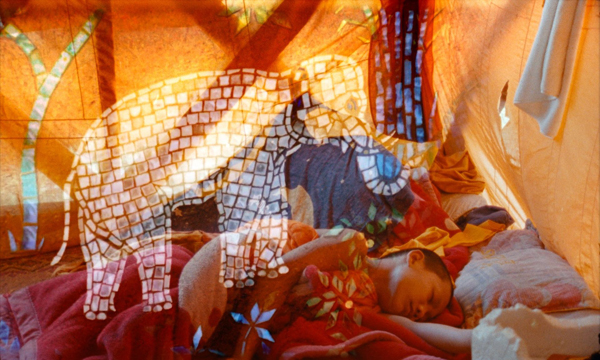
Just as art houses today program both specialty and blockbuster films, said specialty fare (by which we mean not just American indies, but also subtitled international, documentary, and repertory film) travels across a wide range of venues, beyond art house theaters alone. Due to the power of corporate chains like AMC (see here and here), especially in regional markets, specialty distributors often book their titles in big multiplexes rather than art houses. Other venues such as film societies and film festivals—many considered “nontheatrical” or “ancillary” by distributors, and thus not always counted in public grosses—fill in the gaps, and these institutions cultivate audiences devoted to artful cinema in the process. But these one-off screenings, despite reliably turning out movie-mad people in whatever locale they occur, usually rent films for a flat fee, meaning a series of sold-out screening may not add much to box office totals. This all has clear implications for how art house films “play” in most areas of the country.
Consider our Madison, Wisconsin—population: 269,840, metro area: 680,796—for but a moment. Our art house options may look miniscule compared to New York, Los Angeles, or even Chicago, but believe it or not, a ton of specialty films screen here regardless. The extent to which art house titles arrive here anyway, often in unheralded or fleeting stays, provides a sense of how specialty distributors book films in mid-size American cities today.
From a cursory glance, Madison’s moviegoing landscape may look bleak. Technically, Madison has not had a full-service art house cinema since 2016, when our Sundance Cinema (6 screens) was sold to AMC Theatres (that AMC location likewise closed in 2022). Our second-run cinema Market Square Theatre (much beloved by David and Kristin) would frequently book independent titles, but that also closed in 2022. At present, the Madison theatrical market consists of four multiplexes, all of them chains, whether national (one AMC) or regional (we have two Marcus Theatres, plus Flix Brewhouse). Our AMC boasts 18 screens, our Marcus multiplexes possess at least 15 screens each, and Flix Brewhouse has eight, tilting the latter toward more mass-market titles. Against this backdrop, our university-sponsored, free-to-the-public UW Cinematheque has become “the city’s arthouse by default” due to its cinephilic programming, while UW-Madison’s student-run WUD Film, in addition to its second-run prerogative, also books specialty titles like Anatomy of a Fall and Past Lives. So, in sum, that leaves Madison metro with four multiplexes and two nontheatrical venues, plus our annual Wisconsin Film Festival. Six theaters total, yet somehow we have three Costcos.
But specialty films play in all the aforementioned Madison venues. At least one screen at our AMC is dedicated to the latest Indian import on any given week. In recent months, Bertrand Bonello’s The Beast and Ryusuke Hamaguchi’s Evil Does Not Exist, art films to the letter, also played at our AMC, thanks to the joint distribution effort of Janus, Sideshow, and Variance Films. The catch is that, even in a mid-size market like Madison, specialty titles such as these fall into countless different tiers of screen size and scope, as determined by distributor and exhibitor.
We can look at the last year of A24’s distribution slate to get a better sense of this. By our count, between the beginning of September 2023 and September 6, 2024, A24 booked New York theatrical runs for 18 titles. Of these 18 titles, 16 screened or are scheduled to screen in one of the aforementioned Madison venues. (The exceptions are Steve McQueen’s four-plus-hour documentary Occupied City, which for runtime reasons is understandably absent, and Raven Jackson’s All Dirt Roads Taste of Salt, which despite its excellent reviews, here, here, and here, has also not been booked.)
Putting aside Alex Garland’s Civil War, which opened wide across large-format screens, the other 15 A24 films run the gamut of bookings. Higher profile genre and awards-season titles, like The Iron Claw, Love Lies Bleeding, and MaXXXine, opened simultaneously across all four Madison multiplexes. Below this tier, more offbeat or meditative art house fare, like Dream Scenario, Tuesday, and I Saw the TV Glow, have opened in two multiplexes, usually AMC Fitchburg and Marcus Point Cinema, and typically stayed for over a week. Below this, what we presume are considered even harder sells, like Dicks: The Musical and (our personal favorite of the bunch) Problemista, appeared in Marcus Point Cinema for a week, then vanished. Other A24 titles began, and in some cases also ended, their Madison journeys at our UW-Cinematheque. The Zone of Interest inaugurated the Cinematheque’s past spring calendar with a screening where numerous people had to be turned away. Closer to the Academy Awards ceremony, it was booked into multiplex runs. Aaron Schimberg’s dark satire A Different Man, another A24 title, just opened the Cinematheque’s fall calendar to a packed house, though the film’s local trajectory, beyond this one screening, remains uncertain as of this writing.
We outline all these distinctions to stress that, before the audience has a say in any of this, the vagaries of distribution and exhibition have shaped the trajectories of specialty film. We would have liked to see A24 do more than drop Problemista in our market without fanfare, just as we would have wished to see a local exhibitor promote its presence at all.
An odd quirk of regional specialty film circulation is that the most packed and electrifying screenings often add precisely $0 to a film’s reported theatrical gross! As in, some of these screening fees go toward a distributor’s column of ancillary revenue — again, meaning those earnings don’t show up on Box Office Mojo. Other screening fees are outright zilch. One thing we’ve learned from our recent conversations with small exhibitors is that outfits like A24 or Neon will sometimes send their latest titles to venues (usually nontheatrical ones) without charge. These distributors enable these sneak previews not because they hope no one will show up, but because they know such hubs of movie love are legion—ravenous, even, for something different. While we are curious to find data to support this claim, we suspect the word-of-mouth that follows such screenings can tee up a more successful theatrical run in smaller markets. But that only works if the films play theatrically in the markets at all. In short, the total national grosses for such films used by Gleiberman give a misleading measure of how many people are actually watching those films in a theatrical venue.
Beyond the multiplexes and film societies that make up the typical offerings for filmgoers here in Madison and many cities like it, film festivals present another wrinkle in the assumption that theatrical grosses reflect enthusiasm for specialty films. While festivals that feature major film premieres are the most familiar names, like Sundance, South by Southwest, and Telluride, dozens of other festivals occur each year in cities across the country. Audiences can see new American independent, foreign, and documentary films, and in some cases repertory films, at festivals like the Wisconsin Film Festival in Madison; the Cucalorus Film Festival in Wilmington, North Carolina; the Virginia Film Festival in Charlottesville; the Sidewalk Film Festival in Birmingham; the True/False Film Festival in Columbia, Missouri; and many others. Such festivals are deemed “regional” by scholars and critics for their perceived audience reach and press coverage, rather than their programming focus.
If Gleiberman and others concerned about the lack of support for specialty film releases need encouragement, they should look no further than the enthusiasm for events like the Wisconsin Film Festival, which regularly sees sold-out screenings and lines around the blocks of venues throughout eight days of programming (see top and bottom). During this year’s festival in April, we attended a packed screening of Joanna Arnow’s The Feeling That the Time for Doing Something Has Passed. It’s not such a surprise that audiences would flock to a new independent comedy with a winningly droll protagonist, played by the film’s writer and director. Even genre-defying art cinema also saw huge crowds. A Sunday afternoon screening of Lois Patiño’s new film Samsara (above) was filled to the brim with cinephiles eager to see the new slow cinema entry about a dying woman and reincarnation. The film asks the audience to close their eyes midway through the story, when, as Wisconsin Film Festival artistic director Mike King describes it in the program, “The liminal state between life and death is conjured through light and color we perceive through our closed eyelids.” In our minds, this is far more adventurous, challenging, and rewarding than the average two-people-talking-in-a-room dramas that Gleiberman misses, and Madison’s cinephiles did not stay home for Samsara! Distributors, take note – for reasons that defy our understanding, Samsara does not have domestic distribution. If you have someone as convincing as Madison’s own Mike King selling the films to audiences, you could have an art house hit on your hands.
Audiences are indeed seeking out excellent new films outside the blockbuster mold at events like the Wisconsin Film Festival, but, of course, festivals occupy a different role in film exhibition than traditional theatrical venues. (Unlike the Cinematheque, the WFF charges admission.) Like film societies, festivals often book titles for flat-rate fees, so even a considerable number of sold-out festival screenings may not translate to comparatively high reported box office totals. In any case, the ongoing success of regional festivals that show new films to hungry audiences suggests that moviegoers have not abandoned cinema outside of blockbusters. Instead, they may be seeing these films outside of traditional exhibition structures.
Limited release platforms: All at Once
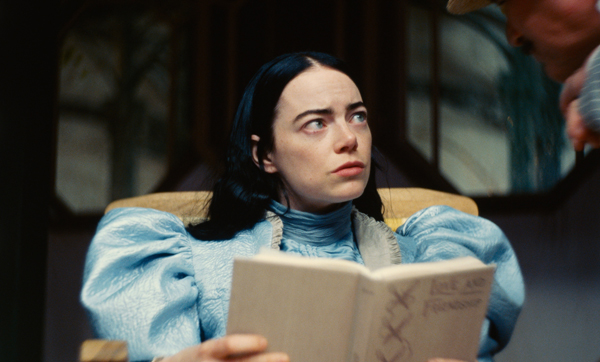
Emma Stone in POOR THINGS. Photo Courtesy of Searchlight Pictures. © 2023 Searchlight Pictures All Rights Reserved.
Audiences are not only encountering films through inconsistent distribution strategies or alternate exhibition routes like festivals, they are also facing a new landscape of fewer and shorter opportunities to see new specialty films. We have deliberately avoided talking too much about streaming, as we would just be reiterating points David has already made (here and here), and because Gleiberman yada yada’d the matter in his column. But as we move toward a conclusion, it is important to acknowledge one of the notable casualties of the streaming era, the 90-day theatrical window, and how specialty distributors and art house theaters have responded to its demise.
You, dear reader, already know how the COVID-19 pandemic accelerated the collapse of theatrical windows. These periods of exclusivity, determining how long viewers had to wait before catching the latest Despicable Me at home or on a plane, had stood firm for decades, as the mutually agreed way distributors and exhibitors had to maximize the profits and prestige of movies as well as the moviegoing experience. Netflix famously disrupted this status quo, and the legacy studios, though they ceded some ground before 2020, buckled with the onset of the pandemic and started delivering their most premium titles at home, within that sacred first window. While theatrical windows have recovered from those dark days, the average period of theatrical exclusivity remains a fraction of what it once was — 37 days, according to Tom Brueggemann’s recent analysis at IndieWire.
This shortened average window can affect the performance of not only blockbusters, but specialty films most acutely. Since the days of Rashomon, art house titles rolled out slowly across the country, opening in New York and a few other select markets before expanding. These limited platform releases took time and crucially required distributors to adjust their plans on the fly, as initial box office reports appeared. The consequences of diminished theatrical windows, in this art house context, should be abundantly clear.
Some specialty distributors have addressed this crisis by releasing their titles, nationwide, over an extremely compressed timeframe. Wes Anderson’s Asteroid City caught headlines last June when Focus Features decided to collapse its platform release timeline from a typical span of months to just two weeks. In its first week, Asteroid City played in six theaters, to a sensational per-theater opening weekend average of $132,111. The next week, the film expanded nationwide to 1,675 theaters. That weekend’s $9,053,551 haul may have convinced Focus to bump up the following weekend’s theater total to 1,901 theaters, but after its fourth weekend, Focus made Asteroid City available on premium video-on-demand, closing that first window.
Focus Features expressed confidence with its Asteroid City theatrical plan, and its $28 million domestic gross made an enviable foundation for the ancillary revenue it has accrued since, as virtually guaranteed by its star-studded cast and auteur’s popularity. But compressing windows for specialty films so dramatically runs the risk of ending a film’s theatrical life before local audiences have a chance to learn about it (sorry, Problemista!). Sony Pictures Classics co-founder Tom Bernard recently expressed as much:
You get to go out into the world much faster, but [chains such as AMC and Regal] only play the movies for a couple of weeks. … Then they want to cycle in something different. So you get to $1 million or $2 million [at the box office] more quickly, but then you’re done theatrically.
Despite the apparent resistance of some exhibitors, platform releases can still pay off. Searchlight’s distribution of Poor Things, one of the titles Gleiberman suggests should have been a bigger sensation at the box office, capitalized on the longstanding strategy. When the film opened in nine theaters across four cities (New York, Los Angeles, Austin, and San Francisco) last December, Deadline noted its high per theater average of $72,000. Poor Things expanded to 17 markets the next week followed by 80 additional cities before the end of the month, and it played exclusively in theaters until its digital release on February 27 of this year.
Poor Things broke $100 million at the global box office after the successful platform release and received a healthy haul of 11 Oscar nominations. Disney’s head of theatrical distribution, Tony Chambers, told Hollywood Reporter, “It is a testament to the strength and quality of the movie, the publicity campaign and the tactical roll-out strategy that after a modest start we are now on track to ultimately hit $115 million globally.” Even with the prominence of star Emma Stone, ending its run with $34.5 million in the United States is no small feat for a very dark comedy about the liberation of a Victorian woman revived via transplant of an infant’s brain. (It’s worth noting here that Yorgos Lanthimos’s previous, acclaimed feature The Favourite totaled nearly the same domestic gross, $34.4 million, in 2018.) The word-of-mouth generated through platform releases appears to remain a viable part of a careful distribution and promotion strategy for studios with box office and awards hopes for their fall releases, even if the path is no longer a given.
We recognize that the patchwork circumstances of film exhibition that have developed in recent decades can lead to lopsided success for blockbusters and little else. On this front we largely agree with Gleiberman’s concern. But blaming audiences for this situation seems an incomplete explanation, at best, given that cinephiles across the country are still seeing movies far beyond just the tentpoles. We are eager to observe how distributors release specialty fare in the coming months, as the major fall festival premieres eventually reach smaller markets around the country. If distributors are willing to deploy platform releases and maintain substantial periods of exclusivity for new films, they could see more titles with solid box office hauls.
Could audiences vote with their dollars to see better films? Probably! But we know without a doubt that the situation is more complex than assumptions that cinephiles have abandoned challenging movies. With factors like shorter theatrical windows, art houses turning toward major Hollywood releases to make money, and increased opportunities for audiences to see specialty films outside of theaters, such as festivals, a look at the current landscape of distribution and exhibition resists the notion that audiences alone are responsible for the challenges facing specialty film releases.
Note: A recent survey conducted by Roku suggests that streaming vs. in-person moviegoing is not a zero-sum game. Among its many data points, the survey notes that “high-frequency streamers” are more frequent moviegoers than “low-frequency streamers.” The survey also spotlights Poor Things and the enthusiasm that followed it across traditional and digital channels, culminating in the film’s Academy Award wins and the attendant spike in streaming interest this past March. (The story linked requires free registration to access.)
Our gratitude to Kristin for spurring us to write this piece and offering insights about the UW-Cinematheque and Wisconsin Film Festival.
Several ideas and data points for this article were gathered from productive conversations we had at the 2024 IND/EX Conference, held in Chicago from June 25 to 28. Many thanks to the leaders at Art House Convergence and Film Festival Alliance for assembling a splendid program. Zach also extends his gratitude to the Marilynn R. Baxter Fund, as administered by UW-Madison’s Department of Communication Arts, for funding his conference attendance. Matt is grateful to the Wisconsin Center for Film and Theater Research for supporting his attendance to speak about the ongoing “Expanding Film Culture’s Field of Vision” project, funded by the National Historical Publications and Records Commission.
Thanks to Jim Healy and Mike King for supplying data points on exhibition, Ani Biswas for help clarifying Madison theater esoterica, Allan Monterrubio for the photo of Sidewalk Cinema’s decked-out Barbie lobby, and Karla Khodanian for her boots-on-the-ground insights about Sidewalk Cinema’s recent programming.
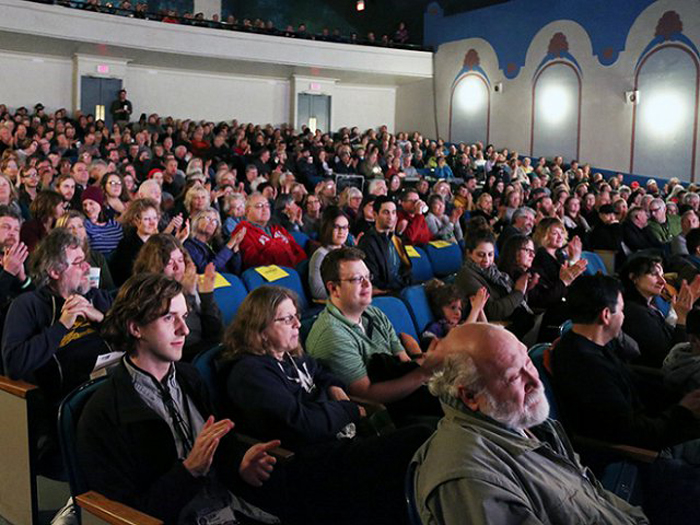
Wisconsin Film Festival at the Barrymore Theater, 2017. In 2024 the place looked much the same.











